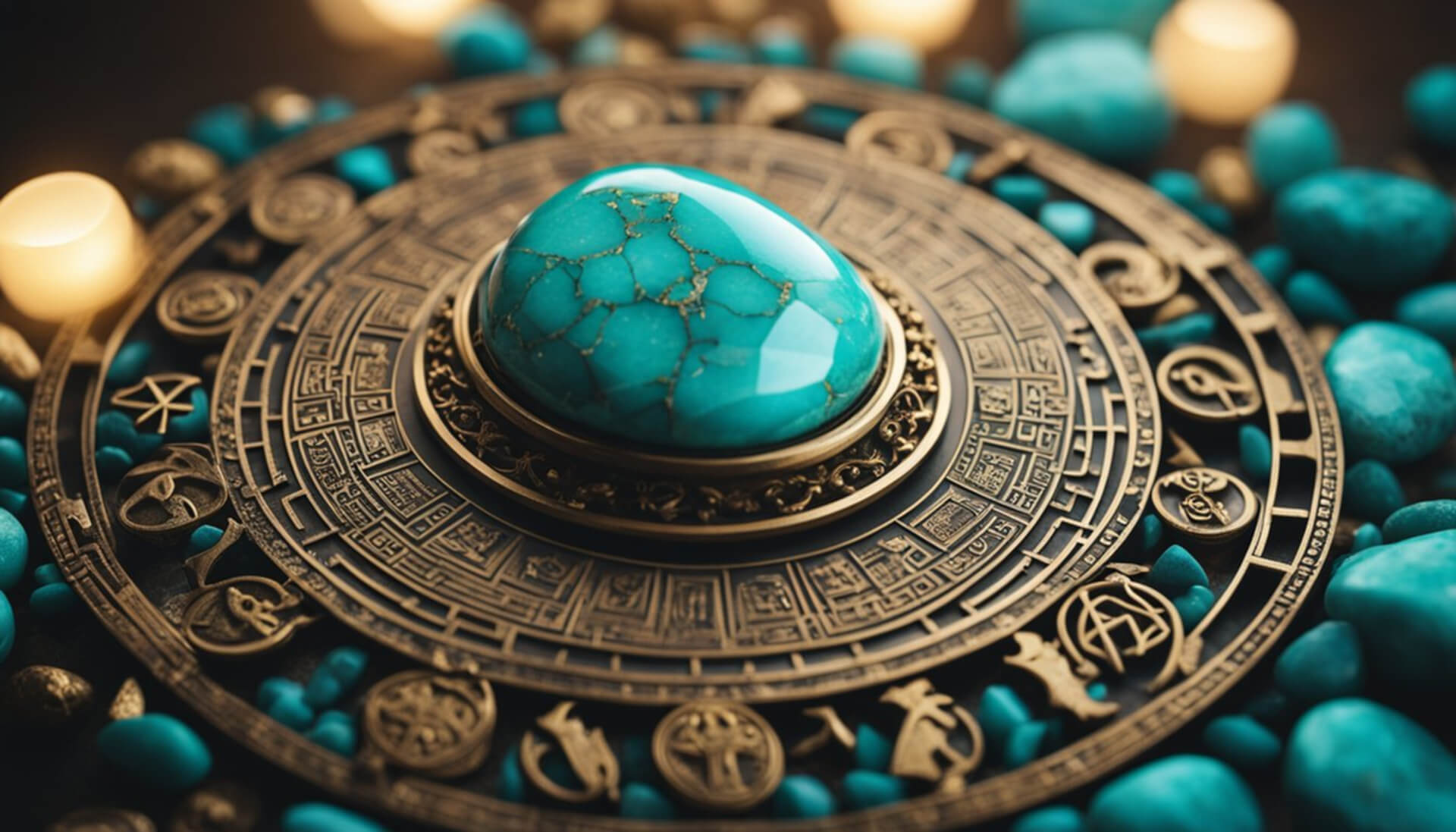December boasts an impressive array of birthstones. Unlike other months, which are represented by a single gem, December is unique with multiple stones attributed to it, each with its own distinct shade of blue.
These stones include the radiant blue zircon, the prestigious tanzanite, and the ancient turquoise. Each gem adds a touch of color to the winter palette and carries its own history and symbolism, intriguing gem enthusiasts and wearers alike.
The significance of December birthstones extends beyond their visual appeal. They have been imbued with meanings and associated with various properties throughout history.
The physical characteristics of these stones, such as durability, luster, and refractive qualities contribute to their desirability in jewelry. Furthermore, they are sourced from different geographical locations around the globe, each location adding to the stone’s story and perceived value.
Wearers and collectors often seek these gems not only for their beauty but also for their believed metaphysical properties, which range from bringing forth clarity to promoting healing.
History and Origin
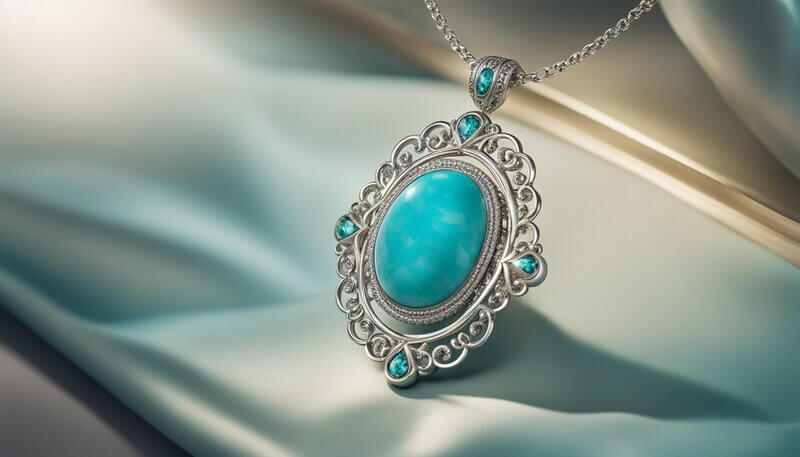
December’s birthstones boast a rich history, with origins steeped in ancient lore and extending through the Middle Ages to the present day. This section takes a closer look at the significance and journey of these captivating gemstones.
Ancient Significance
Historically, birthstones have been celebrated for their beauty and symbolic power. December’s stones—tanzanite, turquoise, and zircon—each have their own ancient ties.
Turquoise was revered in Ancient Egypt, where it adorned the rulers and was believed to offer protection. The earliest mines of turquoise were known to have been in the Sinai Peninsula, dating back to as early as 3000 BCE.
Middle Ages to Modern Day
Moving forward to the Middle Ages, birthstones began to be associated with the twelve apostles, and later, with individual months. The tradition became that wearing a gemstone during its assigned month increased its healing and therapeutic powers.
Over time, this led to the modern concept of birthstones. Trading of gemstones during this period was crucial in spreading their popularity across different cultures.
The discovery of tanzanite in the 20th century, near Arusha, Tanzania, added a newer member to December’s birthstones. Meanwhile, the usage of turquoise and zircon continued from ancient times through various trade routes.
Types of December Birthstones
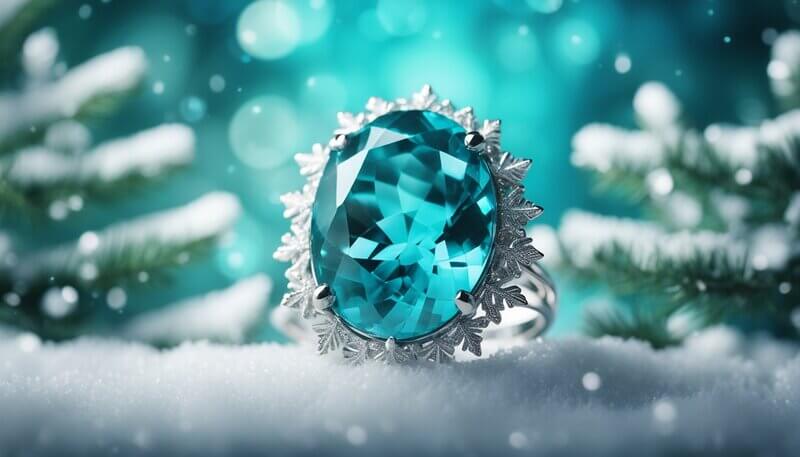
December boasts a unique selection of birthstones that vary not only in color but also in their historical significance and mineral composition. Among these gemstones, turquoise, zircon, and tanzanite stand out with distinctive hues ranging from blue to violet, and each holds a special place in the annals of both geology and adornment.
1. Turquoise
Turquoise is perhaps the most historic of the December birthstones, revered since ancient times. This gemstone typically showcases a captivating blue or blue-green color. It has been prized for its natural beauty and supposed protective properties. Turquoise is also celebrated as the gem of the 11th wedding anniversary.
2. Zircon
Zircon is known for its brilliance and diversity of colors, which include blue, red, yellow, and green. The blue variety is most popular for December and is often regarded as a more affordable alternative to precious gemstones like sapphire, thanks to its similar coloration and impressive luster.
3. Tanzanite
Tanzanite is a relatively recent addition to the gemstone market but has quickly gained popularity for its striking violet-blue color. This stone is found exclusively in Tanzania, from which its name derives. Tanzanite is noted for its strong trichroism, meaning it displays different colors—blue, violet, and red—from various angles.
Symbolism and Meaning

December birthstones are rich in symbolism and meaning. They are often associated with the tranquil qualities of the sea and sky and the dynamic properties of earth and fire. They are historically celebrated for their protective qualities and their purported ability to bring prosperity and wisdom to the wearer.
Healing and Protection
The turquoise gemstone, known for its striking sky blue to green colors, is believed to possess healing qualities. It represents protection, often worn as a talisman to ward off negative energies. Many cultures have esteemed turquoise for its perceived power to offer protection and ensure good health.
Wealth and Prosperity
Turquoise is not only cherished for its aesthetic value but also for its connection to prosperity. It’s often associated with good luck and fortune, allegedly attracting wealth to those wearing it. Similarly, zircon and tanzanite, also December birthstones, are believed to inspire and attract abundance in one’s life.
Love and Wisdom
Turquoise signals love and wisdom, signifying a deep understanding and empathy towards others. With its deep blues and purples resembling royalty, Tanzanite is thought to enhance knowledge and self-awareness. Collectively, these stones are seen as tools to deepen relationships and enhance the wearer’s insight.
Physical Properties
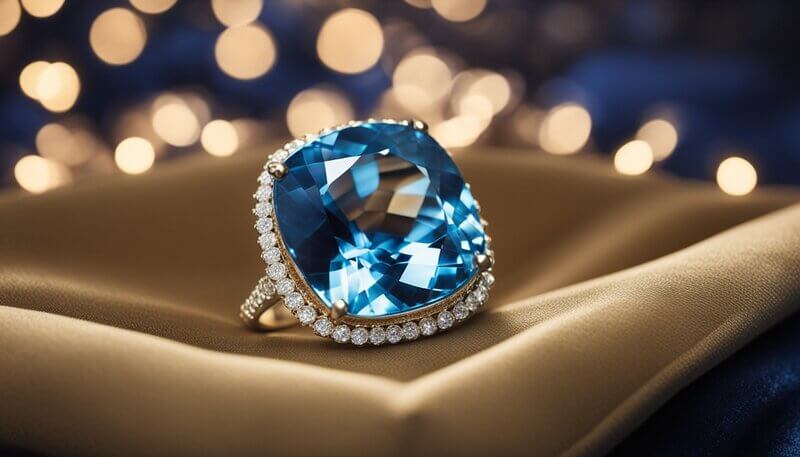
The physical properties of December birthstones are distinct and varied among its different types, with specifics such as hardness and color variations setting them apart from other gemstones.
Hardness and Durability
December birthstones encompass a range of gems, including tanzanite, turquoise, and blue zircon. Each has a unique hardness on the Mohs scale, which reflects their durability.
Blue zircon, the most durable of the three, rates between 7.5 and 8, making it relatively hard and suitable for jewelry that withstands daily wear. Comparatively, tanzanite is less hard, rating around 6.5 to 7, which makes it more prone to scratching. Meanwhile, turquoise is even softer, with a hardness rating of 5 to 6, which requires careful handling to prevent damage.
Color Variations
The December birthstones exhibit a color spectrum that adds to their desirability.
Blue zircon is prized for its brilliant blue hues, ranging from pastel to a saturated deep blue, resembling some sapphire shades. It is also found in red and green, but blue is the most popular for December birthstones.
On the other hand, tanzanite boasts a unique violet blue color, often exuding a deep, saturated tone akin to some sapphires. Under different lighting conditions, tanzanite may appear to shift between violet and blue.
Unlike the blue stones, turquoise is known for its greenish-blue to pale sky blue colors, each stone often unique with its matrix patterns. The rarity of these color variations contributes to these gemstones’ perceived value and desirability, with the rich blues often being more sought after than paler or greenish hues.
Jewelry and Fashion
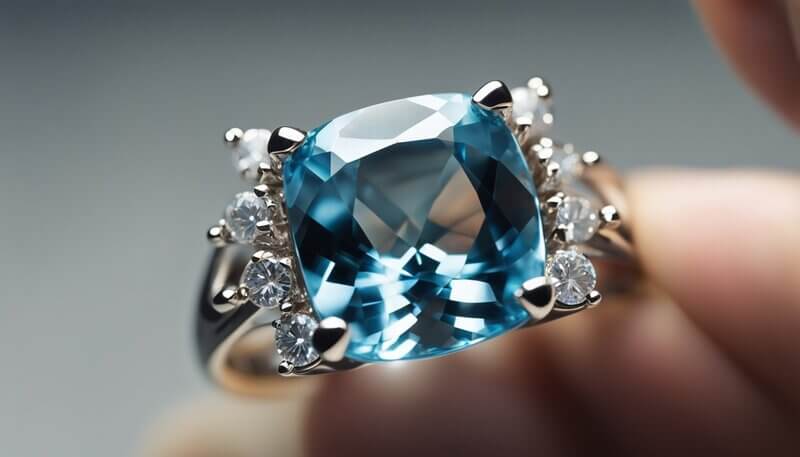
December’s birthstone inspires a range of jewelry options that elegantly elevate personal style and fashion sensibilities.
Popular Jewelry Types
Regarding December birthstone jewelry, necklaces and earrings are particularly sought after. Often, these items feature turquoise—a traditional December gem—alongside diamonds for added brilliance.
- Earrings: From studs to drop earrings, incorporating turquoise and tanzanite’s cool tones can complement casual and formal wear.
- Necklaces: Pendants showcasing these gemstones, sometimes accented with diamonds, offer a classic touch to any outfit.
Styling and Coordination
When styling December birthstone jewelry, coordination with one’s wardrobe is key. These pieces can serve as the focal point or as subtle accents.
- Color Coordination: A turquoise bracelet alongside a white blouse can accentuate the stone’s vivid hue, while tanzanite earrings pair well with darker colors for a sophisticated contrast.
- Layering: For a trendy look, layer delicate sapphire or garnet pieces with a statement birthstone necklace to create depth and interest.
Gemstone Care
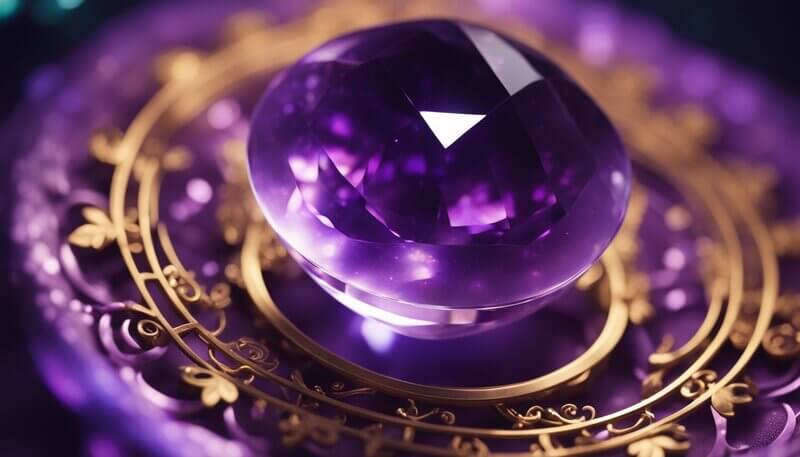
Proper care for December’s birthstones ensures their longevity and preserves their brilliance. Each gemstone has its recommended cleaning methods and maintenance tips due to their unique physical properties.
Cleaning Methods
A common cleaning approach for Tanzanite, Turquoise, and Zircon is to use warm water. They should be gently cleaned with mild dish soap and warm water.
One can carefully remove accumulated dirt from the gemstone’s surface and settings using a soft brush.
It’s important to rinse the stones thoroughly with warm water to remove soap residue.
- Tanzanite: A gem prized for its exquisite blue-violet hues, it must never be subjected to steam or ultrasonic cleaners.
- Turquoise: is often treated to enhance color and durability, so avoid cleaners that could damage the treatment or the stone itself.
- Zircon: While it’s known for its excellent luster, harsh chemicals can quickly diminish its natural beauty.
Maintenance Tips
Regular maintenance extends the beauty and life of birthstones.
Gemstones like Zircon should be stored separately from other harder jewels to prevent scratches.
- Tanzanite: Being less durable, it requires extra care to avoid sharp blows that can chip or crack the stone.
- Turquoise: It should be protected from cosmetics, perfume, and skin oils, which can change color over time.
- Zircon: Over time, it can rub, so it’s best to wear it with care and polish it gently with a soft cloth to maintain its shine.
Always ensure that after cleaning, the gemstones are completely dry before storage.
It’s not just about maintaining the sparkle—careful handling and storage are equally crucial to the gemstone’s longevity.
Geographic Sources

The key locations for mining December birthstones, notably Tanzanite, vary significantly. Some mines are nestled in the majestic Merelani Hills of Tanzania, while others are dispersed across various parts of the globe.
Tanzanian Mines
Tanzanite, a stone with a captivating blue-violet hue, is endemic to the Merelani Hills of Tanzania near Merelani.
This singular location, with a relatively small mining area of approximately 7 square kilometers, is the only known source for Tanzanite worldwide.
Since its discovery in 1967, Tanzanite has risen in prominence due to its limited supply and distinct, vibrant color.
Global Deposits
Although Tanzanite is exclusive to Tanzania, other December birthstones like Zircon and Turquoise have a more diverse geographic spread.
Deposits of Zircon have been found in countries like:
- Sri Lanka
- Vietnam
- China
Each location contributes significantly to the global supply of these gemstones, with Sri Lanka in particular known for its wealth of gemstone resources.
Metaphysical Beliefs
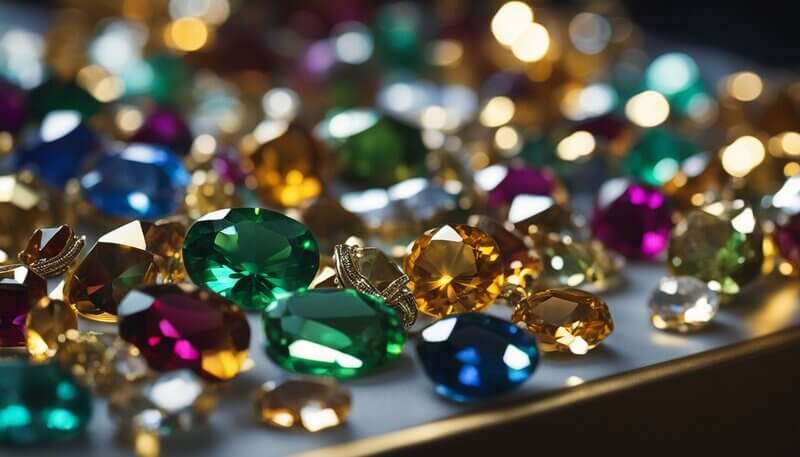
The metaphysical properties of December’s birthstones are deeply intertwined with zodiac connections and the attributes traditionally assigned to the birth month.
They are believed to influence aspects like personality, provide courage, and denote honor, and can be considered thoughtful gifts or travel companions.
Zodiac Connections
December’s birthstones, including Turquoise, Tanzanite, and Zircon, are associated with the Sagittarius and Capricorn zodiac signs.
The wearer of these stones, especially those born under these signs, is thought to receive enhanced communication and the ability to speak truth with honor and courage.
Turquoise, in particular, is linked with Sagittarius. It offers protection, especially in battle, and promotes positive energy.
Birth Month Attributes
December birthstones carry distinctive attributes:
- Turquoise: Known for healing and protection, it is thought to bring peace to the home and good fortune to the wearer.
- Tanzanite: Discovered in Tanzania, this gemstone is admired for its vibrant blue-violet color and is said to inspire compassion and calmness. It is a fitting gift for those looking to relieve stress from personal battles.
- Zircon: Believed to aid in travel and promote wisdom, it encourages the wearer to appreciate the beauty that life has to offer, especially in the latter part of the year when reflections and transitions take place.
Market and Value
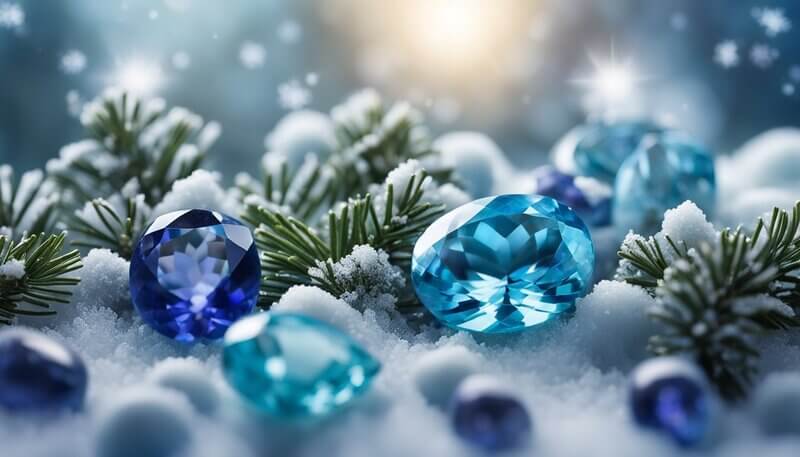
The evaluation of December birthstones in the market hinges on factors like rarity and quality, which play crucial roles in determining their value.
These gems are more than mere adornments; they are often considered as investments that can accumulate wealth over time.
Pricing Factors
December birthstones such as tanzanite, turquoise, and zircon have various pricing factors.
Rarity significantly affects their value—tanzanite, particularly with its limited source, commands high prices.
The clarity, cut, and carat also play integral parts in defining the gem’s price.
For instance, zircon stones range approximately from $75 to $200 per carat, depending on their color and quality.
Factors affecting trade, such as availability and demand in the market, further manipulate these gemstones’ worth.
Investment Potential
The investment potential for each December birthstone varies.
Tanzanite is often regarded as a good investment due to its rarity and the fact that it is sourced from only one location worldwide.
Interestingly, top-grade tanzanite can be more valuable than diamonds.
On the other hand, while turquoise and zircon are more abundant and generally less expensive, the finest quality stones can still fetch a considerable price.
Collectors and investors might reap returns, as high-quality and rare pieces of these gems can experience a rise in value over time.
However, the market for these gems can fluctuate, so potential investors should consider the stability of the stone’s value and recognize the long-term nature of such assets.
Frequently Asked Questions
1. What is the meaning behind the December birthstone?
The December birthstones symbolize success, wisdom, and transformative growth. Each stone associated with December carries its unique meaning.
2. What color represents the December birthstone?
December birthstones are typically recognized for their blue hues, ranging from turquoise’s vibrant blue to tanzanite’s deep blue violet.
3. What are the different birthstones associated with December?
December is associated with multiple birthstones: turquoise, zircon, and tanzanite. Each gem offers a different shade of blue and has distinct properties.
4. How does the December birthstone relate to Sagittarius?
Sagittarius, the Zodiac sign for those born in early December, resonates with the wisdom and fortune that December birthstones such as turquoise are believed to bring.
5. What are some popular jewelry items featuring the December birthstone?
Popular jewelry featuring December birthstones includes rings, earrings, and pendants.
They often showcase the vibrant blues of the stones to reflect the wearer’s style and the significance of their birth month.
6. What are the historical significances of December’s birthstones?
Historically, December’s birthstones have been treasured for their beauty and rarity.
Turquoise has been used for millennia for protection and power. Meanwhile, tanzanite’s discovery in the 20th century added a modern rarity to December’s gems.

